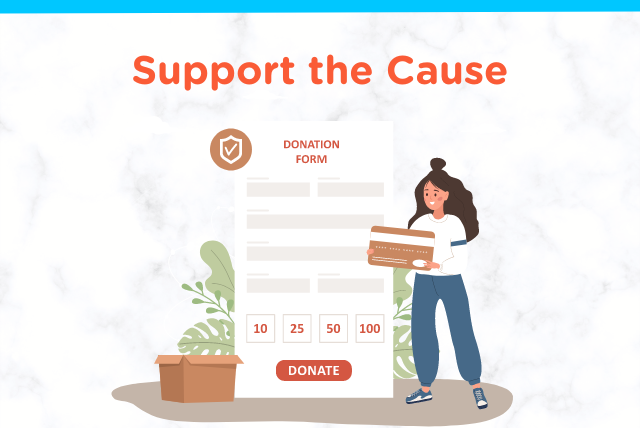ACT on Anxiety Challenge

How to ACT on Anxiety
This June, celebrate Action Anxiety Day by challenging yourself to prioritize your mental health. Managing anxiety is not one-size-fits-all, so during the month of June, commit to an action that aligns with your personal mental health goals!
For example, you can challenge yourself to:
1) A 30-day self care ritual (i.e., waking for 1 hour outside every day)
or
2) Taking 30 days to work toward facing a fear (i.e., riding an elevator)
Whether your goal is to create a new self-care habit or conquer a fear, this challenge can be a catalyst or stepping stone on your mental health journey!
Join the challenge today by creating a fundraising campaign and sharing your ACT on Anxiety Challenge with your friends and family.
Why ACT on your Mental Health?
Prioritizing mental health is essential for overall well-being and quality of life. By taking concrete actions (like facing a fear or implementing a daily self-care ritual), individuals can enhance their resilience, cope more effectively with stress, and foster healthier relationships. Investing in your mental health benefits everyone!
How can I participate?
Step 1: Choose your Challenge
Not sure what ACTion to take? Read our pro tips below!
Step 2: Register your Campaign
Click the “Start your Challenge” button below to create your team or personal fundraising page! Follow the prompts and make sure you specify how you are taking ACTion in your profile bio.
Step 3: Ask for Support
Get motivated to stick with your ACTion by sharing your challenge with your friends and family. Ask them to support you through donations or by joining you in taking up a challenge for themselves!
Step 4: Share Updates
Inspire others to face their fears or commit to a self-care ritual by periodically sharing updates about your 30-day challenge experience! Don’t forget to tag us on social media and use our hashtags, #ActionAnxietyDay or #ACTonAnxiety


How to: Create a healthy self-care habit
Use these proven goal-setting steps to help you choose a self-care goal that is achievable!
Step 1: Identify Your Goal
Reflect on your current self-care practice and identify opportunities for improvement! Once you select your goal, make sure it is 1) realistic 2) attainable 3) concrete and 4) specific (for example, going to the gym for 30 minutes, 3 times a week).
Step 2: Break Goal into Smaller Steps
Many goals can be broken down into smaller steps to make them less daunting! For example, if your goal is to meditate for 20 minutes a day, start with 2 minutes and gradually work your way up.
Step 3: Identify Obstacles
Once you have established a goal and mapped out the steps it will take to get there, identify obstacles that may be standing in your way! This can help you find realistic solutions. For example, one obstacle to going to the gym may be finding childcare, so you’ll need to strategize how you can arrange a babysitter.
Step 4: Schedule Your Time
You are more likely to complete your self-care ritual if you schedule a clear window of time when you can make it happen. For example, if your goal is to spend more time outside, look at your calendar and plan to make time for your 45-minute nature walks.
Step 1: Carry Out Your Goals
Help yourself by writing down the steps you need to take to complete your goal. The key to starting a healthy habit is to ACT; don’t wait for the motivation to come. Creating a self-care ritual is challenging, so make sure to reward yourself, be flexible, and don’t be discouraged if you need to revise your goal.

-
-
How to: Face a fear
One of the best ways to overcome your fears is to face them head on. The process of facing fears is called exposure. It involves taking small, manageable steps to slowly and repeatedly face the things you fear until you feel less anxious! Learn to overcome your fears in these three easy steps:
Step 1: Identify your Fear
- What fear do you want to overcome? For example, maybe you’d like to overcome your fear of spiders, needles or speaking to strangers.
- Step 2: Brainstorm Steps
- Once you’ve identified a fear you’d like to tackle, start by breaking up facing your fear into smaller steps. Some steps will be harder and some will be easier. For example, when working on social anxiety, talking to a new person for 30 seconds is less challenging than talking to them for 5 minutes.
- Step 3: Build a Fear Ladder
- Consider the steps you brainstormed and organize them from the least to most scary. Look at each step and rate how anxious you would feel completing that step on a scale from 0 (no anxiety) to 10 (severe anxiety).
- Click the link below to view fear ladder examples, or use the MindShift App to complete the process on your mobile phone!
-
Other ways to get Involved

Educator Toolkit
Comprehensive lesson plans for teachers to bring anxiety education into the classroom.

Sign the Proclamation
Sign, share, and support to show you care about mental health in Canada!

